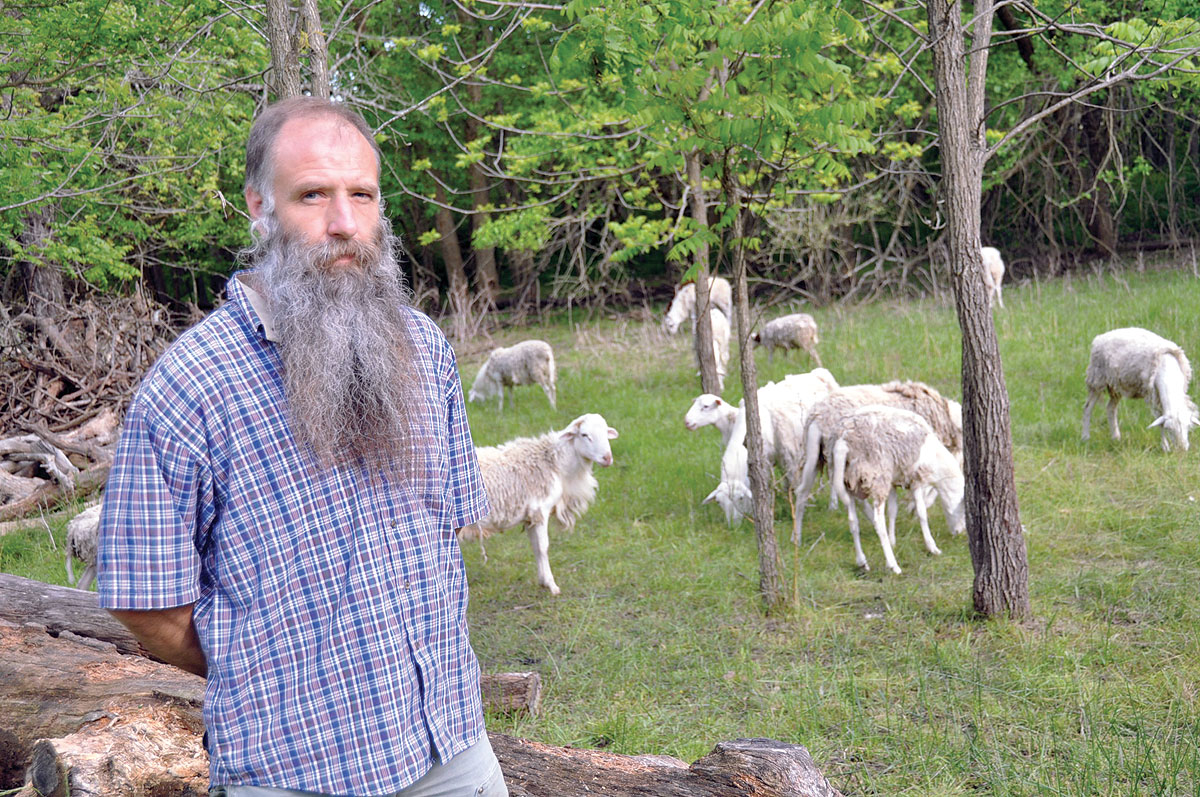What do you do when you want to give your children the experience of caring for livestock, but live in the city limits? Fence in your backyard and raise meat goats.
Quincy and Heather McCroskey, along with their children, 13-year-old daughter Perri and 10-year-old son Galvin, have 19 Boer goats at their Nixa, Mo., home, which is also the home of Backroad Boers. The family began raising goats about six years ago. Quincy has a background with cattle, as does Heather, so they knew they did not have enough room to raise calves, so they began looking into goats.
“You can keep goats in a smaller area,” he said. “When we started 4-H, Galvin was 6 years old, so goats would be easier for him to handle and learn, instead of being around a 1,000-pound calf.”
Most of their herd is made up of registered or high percentage Boer, which Galvin and Perri show during the summer.
Quincy said when they began their goat operation they quickly realized there was limited information regarding meat goat production, and even fewer products in their area, but that’s changing.
“When we first started, we had to talk to a vet in Bolivar (Mo.) because no one around here knew anything about goats; it was all horses or cattle,” he said. “You just have to keep learning more and more about them, and there’s so much more to them than there is cattle.
“The very first goat we bought was a buck; we didn’t know we needed to start with does. We knew we didn’t want to milk twice a day, so we looked at meat goats to try and figure out what we wanted. There were so many pictures of Boer bucks that were just huge.”
“We saw them and just thought they were beautiful animals,” Heather added.
Initially, the McCroskeys purchased commercial goats, not wanting to invest a great deal of money into animals they knew little about.
“I didn’t want to buy a $1,000 goat and it die in two days because I don’t know what I was doing,” Quincy said. “I think that first buck we gave $75 for and a doe was like $50. When we started with 4-H, there were two families that had goats and we joined that group so we could learn.”
While many livestock producers are able to rotate pastures to help control parasites, that is not an option for Backroad Boers, but through careful management, Heather said they have few problems.
“We don’t have any more than what other people have,” she said. “We might have to medicate a little more frequently because of the smaller area.”
Quincy added since parasites can build a tolerance for wormers, they only worm when needed.
“We lost several goats just because we were learning,” he said. “We learned they can get anemic because of the worms and we just didn’t hit it as hard and as frequent as we should have. We have learned the hard way.”
Today the McCroskeys carefully monitor for parasites through fecal samples and the observation of manure piles.
Quincy added the limited space also means they must rotate bucks a little more often than they would like, but that does present them with the opportunities to get new bloodlines in their herd.
“We’re still growing,” he said.
The females are serviced through natural cover by the McCroskey’s registered buck, and does typically kid in February or March.
“It gives us young kids for Perri and Galvin to show each year,” Quincy explained.
Heather said they prefer not to bred does until they are a year old, or older, to allow the does time to grow.
“They could be kidding out at a year old, but that is really too young for us,” she said.
The McCroskeys keep a lespedeza mix hay out at all times. This summer they are planning to go with straight lespedeza hay.
“(Providing hay) helps with the worms too because they aren’t eating off the ground all the time,” Quincy said. “Lespedeza is also kind of like a natural dewormer.”
Goats also receive a specially mixed ration containing corn, pellets, beat pulp shreds, cottonseed hulls, sunflower seed, molasses and other ingredients.
“There’s nothing wrong with buying a premixed feed, but this way we get what we want,” Quincy said. “It also ends up being a little cheaper for us by having it mixed in bulk.”
While they would love to have more goats, Quincy and Heather know they can’t handle many more, simply because they don’t have room.
“The main thing is the price of land around here,” Quincy said, adding that they have considered trying to buy a neighboring lot that is overgrown.
Because they have learned more about meat goat production, they are more selective about the animals they retain, and concentrate on purchasing higher quality animals when they do purchase does.
“The kids want to keep all of the babies, but being on a smaller place, we’ve told them we have to be picky about what we keep,” Quincy said. “Out of the kids from last year, we kept two.”
“We might like the color, but nothing else,” Heather said. “We can work on throwing color.”
Quincy said their early does were culls from other producers, but they were in his price range.
“We are to the point now, like last year, we were able to sell some of our does that had fish teats and build new pens, and we picked up two younger does with bloodlines that are new to us,” he said. “We were also able to get a doe that won her class in an ABGA (American Boer Goat Association) show.”
Heather added that involvement in showing goats and being active with the Billings Countyliners 4-H club has been a great experience for their children, giving them the opportunity to learn leadership skills and other qualities that will help them later in life.
“With the goats, there are also life lessons, even when we had the deaths,” Quincy said.
The McCroskeys hope by continuing to improve their herd, Perri and Galvin will be competitive in the show ring in larger shows in the future, including the Ozark Empire Fair and the Missouri State Fair.
“We set goals for ourselves,” Qunicy said. “Even if we don’t do very good, it will let them get their feet wet at a bigger show. We think we improve every year on the quality of goats we have, so in a year or two, if we have something that can win, the kids will have already been there a time or two.”








